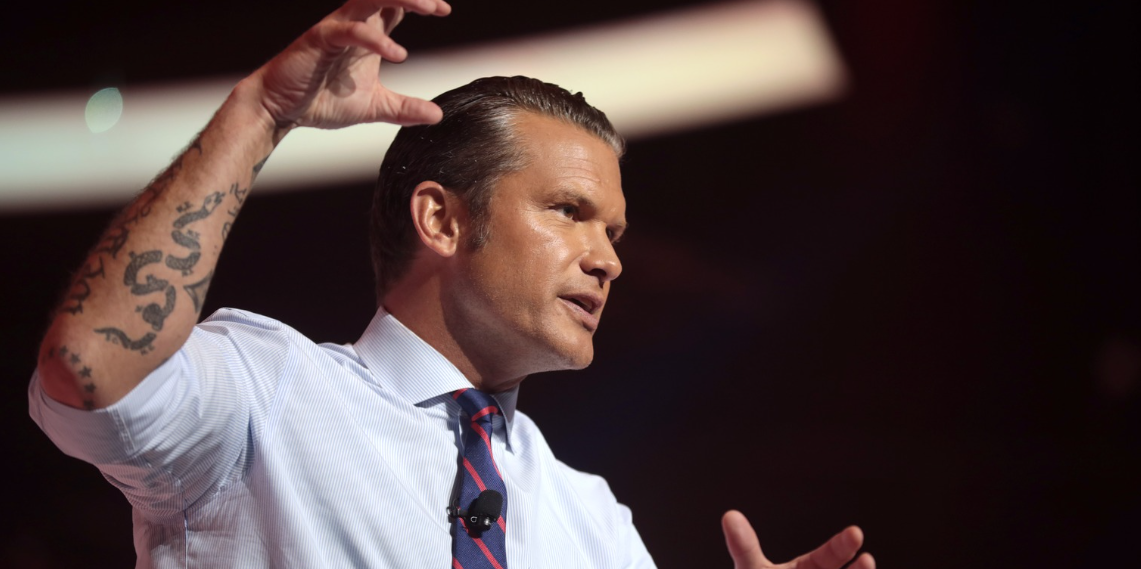Defense Secretary Pete Hegseth managed to turn a diplomatic meeting into a fashion firestorm, after appearing at Friday’s Trump–Zelensky summit in a necktie whose color bands matched the Russian tricolor. The choice, captured in photos from the session, set off a quick moving wave of speculation and anger online, with critics questioning the optics of wearing red, white, and blue stripes arranged like Russia’s flag at a moment when Ukraine is fighting for survival.
In the images, Hegseth is seated to President Trump’s left, with Secretary of State Marco Rubio between them. Vice President JD Vance and Treasury Secretary Scott Bessent are positioned on the president’s right. The tableau was meant to signal unity and resolve, but the tie dominated the conversation. Some viewers immediately saw the sequence of colors as a glaring nod to Russia, others argued the palette could just as easily evoke the flags of the United States or the Netherlands, and a few wondered if it was simply an unlucky wardrobe pick that collided with geopolitics in the worst possible way.
The sharpest criticism came from Ukraine advocates watching closely. “Hegseth wore a tie with Russian flags to meet with Zelensky. Is he trying to send a message, or is he just an ignorant idiot? Or did his actual boss, Elbridge Colby, ask him to do it?,” wrote activist Joni Askola on X, channeling the fury of those who saw the tie as an unnecessary provocation. Her post ricocheted across social platforms, drawing thousands of replies, many of them from Ukrainians or diaspora groups who read the accessory as, at best, tone deaf.
Pete Hegseth decided to wear a Russian tricolor flag tie at to the White House meeting with President Zelensky.
I don’t believe for a second this is accidental or that “he was actually wearing the colors of the US flag”.
For once, Hegseth knew very well what he was doing. pic.twitter.com/fpaUdRz5xv
— Daractenus (@Daractenus) October 17, 2025
Defenders countered that color schemes can be a Rorschach test, and that red, white, and blue are ubiquitous. Several commenters said the tie looked closer to the Dutch flag, and that fixating on an accessory was missing the point of a meeting focused on war strategy, air defense, and economic support. Others urged patience, arguing that without a clear statement of intent, the fairest interpretation is that it was an unfortunate coincidence.
Still, symbols are part of statecraft, and clothing has long been used to send subtle signals. In this case, no explanation from Hegseth materialized during or immediately after the summit, leaving the discourse to swirl around screenshots and hot takes. That silence allowed the narrative to harden online, and it left the Pentagon with a familiar headache, one more controversy to swat away while trying to keep attention on policy.
For Kyiv, the episode is one more reminder of how sensitive optics have become. President Volodymyr Zelensky arrives at every Western meeting balancing gratitude with urgency, seeking tangible commitments on air defense and artillery while managing an information war that prizes clarity and symbolism. A tie should not matter, but in a war where narratives travel faster than supply chains, it can.
Whether the uproar fades or becomes a new shorthand for Hegseth’s critics will depend on what happens next, not on what he wore. If the summit yields concrete support for Ukraine, the tie will read as a footnote. If it does not, the image of an American defense chief in Russian colors at a Trump–Zelensky meeting is likely to linger, a small but stinging reminder that in geopolitics, details are never just details.









